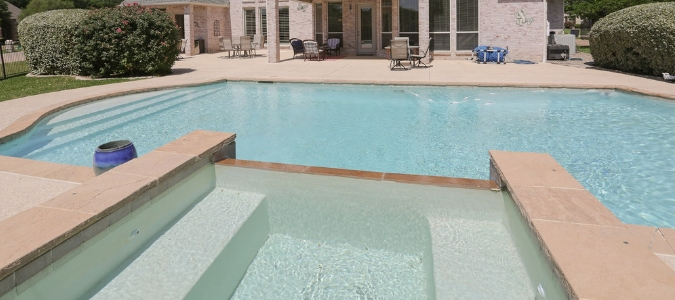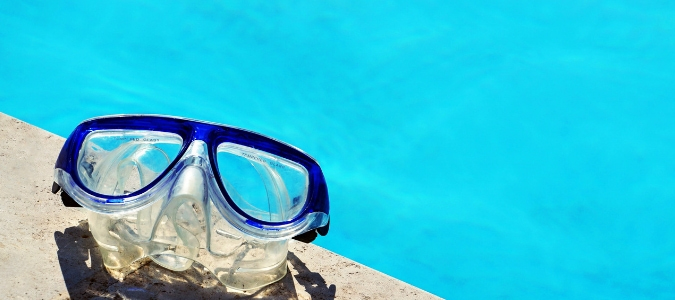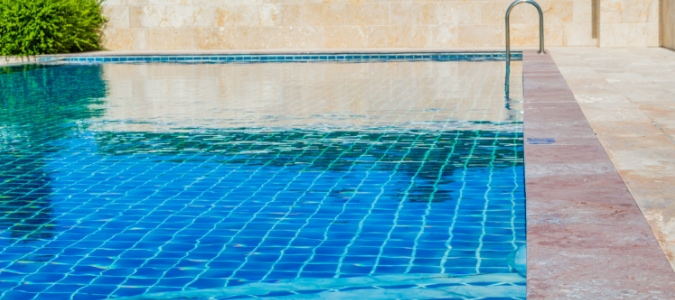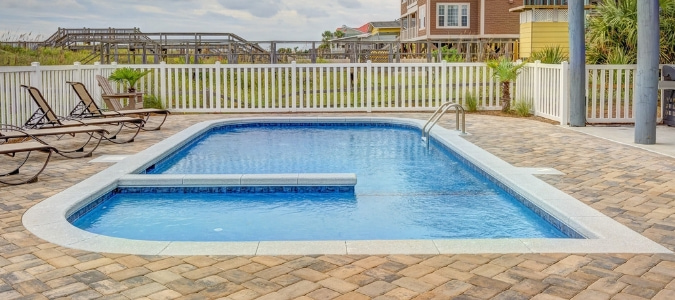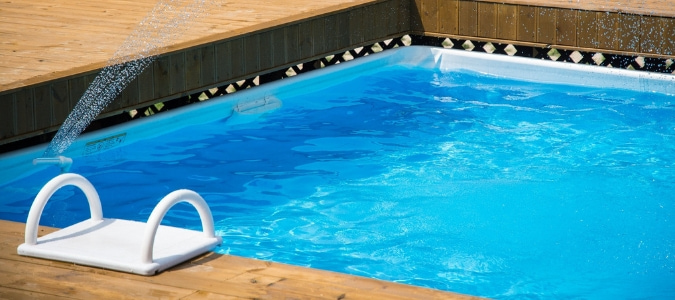
To save a little money, you decided to go the DIY route with your pool. You did the cleaning. You handled the maintenance issues. You mixed in the chlorine and other chemicals to keep the pool pristine.
At first, it seemed to work pretty well. The kids had lots of fun, and you got to enjoy not paying for a service, putting a small chunk of change back into your pocket. Not too bad.
After a little time passed, though, you noticed that you were starting to get some algae growth. Later, you discovered that the pool was kind of green and cloudy. Then, after a bunch of kids came over and swam for the afternoon, several of them got sick—including yours.
What was going on? Weren’t the pool chemicals supposed to be stopping those kinds of things from happening?
They are, provided that you make sure you’re using the right chemicals in the right amounts.
This scenario unfolds countless times across the United States each day during swimming season. A homeowner takes over the maintenance of their pool, does everything right (or so they think) and ends up experiencing dirt, grime, and sickness after swimming.
The cause could be a few different things, but one of the most common issues pool service professionals run across is chlorine degradation. Most people don’t know this, but when pools are hit by bright sunlight, it can cause most of the chlorine to degrade shockingly fast.
How fast?
Believe it or not, this process can happen in about an hour. Even more shocking is to consider that the chlorine in a pool can be reduced by up to 90 percent after only two hours in direct sunlight.
Couple that with the fact that the climate is so warm in the south, and you have a recipe for disaster, with chlorine degrading quickly and your pool quickly becoming inviting for bacterial growth.
What can you do to stop this? Add cyanuric acid.
What’s that? This chemical is often called a “stabilizer” because it bonds with chlorine and protects it, preventing it from being degraded by the sun. By properly using cyanuric acid (CA), you can make your chlorine last 3 to 10 times longer than it would otherwise.
Let’s explore the role of cyanuric acid in keeping your pool looking great and your swimmers safe.
How To Increase Cyanuric Acid In Pool: Add It!
So, what do you do if you want to put cyanuric acid in your pool to protect and increase the life of your chlorine?
There are several different options to increase the level of this chemical and help restore the chemical balance of your pool
Dichlor
This granular chemical compound, also called sodium dichloro-S-triazinetrione, contains both chlorine and cyanuric acid, so you don’t have to worry about adding extra cyanuric acid by itself if you use it. Since it is granular, dichlor dissolves fairly slowly. If you do decide to add dichlor to your pool, a few words of warning: If you feed it into a skimmer, take care not to add too much too quickly, or you could end up blocking the lines.
Trichlor
Trichloroisocyanuric acid is very similar to dichlor, except that it comes as a tablet or stick that can be added to your erosion feeder. This organic compound should be added using a chlorinator, not with the skimmer nor by putting it directly in the pool.
Liquid Slurry
Some cyanuric acid products are sold as liquid slurries rather than granular additives. Like dichlor, it’s important to add liquid slurry a bit at a time to avoid clogs and stains. Start with a small amount, and don’t add another until the first completely dissolves.
Ideally, you want the cyanuric acid level in your pool to be between 30 and 50 parts per million (ppm). At that level, you should receive the most bang for your buck, making the chlorine last as long as possible. If the level is over 50 ppm, there are diminishing returns.
Beyond that, you absolutely do not want your cyanuric acid levels to ever exceed 100 ppm.
Drawbacks Of Using Too Much Cyanuric Acid In Your Pool
Nothing is perfect, right? Well, you already know how too little cyanuric acid allowed the chlorine to degrade, which led to a dirtier, more bacteria-filled pool. But too much cyanuric acid essentially leads to the same thing.
Here is why this happens.
Chlorine Becomes Less Effective
When cyanuric acid bonds with chlorine, the chlorine doesn’t work as well – plain and simple. Up to a certain point, this reduced effectiveness is more than balanced out by the fact that the chlorine doesn’t just degrade and completely stop working in an hour or two. However, when too much cyanuric acid completely overpowers the chlorine, problems occur.
Chlorine Works More Slowly
Even a small amount of cyanuric acid makes chlorine work more slowly. Similar to the point we made above, however, this exchange is generally worth it because the chlorine sticks around longer.
When chlorine isn’t effective, you will notice that the water becomes cloudy and more bacteria will build up. The issue, then, becomes finding a way to keep the amount of cyanuric acid in your pool at the correct level.
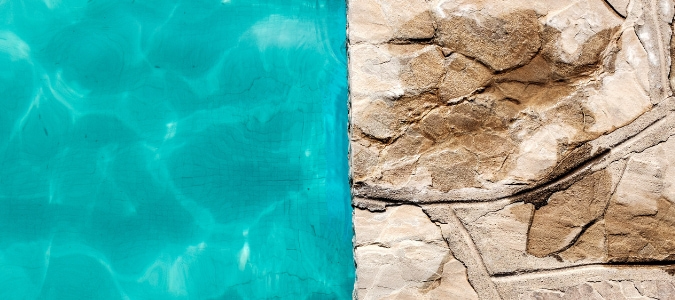
Maintain Balance With A Cyanuric Acid Test
Keeping the right level of cyanuric acid in your pool starts with actually knowing what that level is. Thankfully, there are test strips and kits that you can use for just such a purpose.
Make sure you choose a kit that is able to measure from 0 to 100 ppm. Begin on a regular schedule so that you can conduct testing at least once a week. As we already mentioned, you’ll want to keep the optimal amount of cyanuric acid between 30 and 50 ppm.
Below, we’re going to discuss what you can do if you discover that your levels of cyanuric acid are either too low or too high.
Cyanuric Acid Low In Pool: What You Should Do?
Low levels of cyanuric acid are easy to solve. The solution? Add more!
How exactly you do this depends on the method you’re using. Tablets that contain cyanuric acid will cause the parts per million to increase as they dissolve, so it may just be that you need to wait a bit longer.
If you believe that the cyanuric acid product you’re using has had time to spread out and bond with the chlorine in the water and your levels are still low, the next step is to add more cyanuric acid until you get your pool to the right level.
Truth be told though, this is an uncommon problem to face once you start using cyanuric acid. That’s because the chemical doesn’t degrade or dissolve—ever.
So, generally speaking, your levels will always continue to go up until and unless you take specific action to reduce them.
Cyanuric Acid Reducer: How To Get Your Levels Down
A far more common problem pool owners face when they use cyanuric acid is how to keep the chemical below the 50 ppm level. This is because, unlike with many other chemicals, cyanuric acid isn’t “used up.” It just continues to accumulate.
The only way it leaves the pool is by, well, leaving the pool.
What does that mean?
- Water splashing out.
- Draining the pool.
- Increasing backwash times.
That’s right. You have to physically remove cyanuric acid from your pool by switching out the water in order to lower the levels to where you want them. Worse, some of the cyanuric acid is almost guaranteed to cling to the pool basin, filtration system, and piping, so getting rid of a high amount can be quite difficult.
At least, that has been the case until recently.
There is now a product on the market called cyanuric acid reducer that works on a molecular level to break down and destroy the cyanuric acid in your pool. Even better, it is designed to get cyanuric acid down to the correct level and then stop, leaving you with a perfectly balanced swimming pool.
With cyanuric acid reducer, you can save water, avoid draining the cyanuric acid into waterways and spend less money replacing chemicals after you refill your pool. It can also reduce the amount of the time you spent tinkering and worrying about your pool water.
ABC Can Keep Your Pool Balanced
Any pool owner can tell you that it takes a lot to keep a pool clean and well-maintained. Stopping your pool cleaning service can seem like a nice, quick way to save some money, but it’s important to consider what you’re giving up—and what you’re taking on. For many of us who live in the southern states, that means paying attention to cyanuric acid not only during swimming season but also monitoring winter pool chemicals. You’ll also need to learn how to clean pool cartridge filters and make minor repairs. So much for that relaxing backyard oasis!
There is a reason that pool owners outsource their pool care to ABC Home & Commercial Services. This type of work may seem easy, but it takes extensive training and experience to do it right. Then there’s the time that you have to invest—and the time it takes away from other things, especially enjoying spending time in your pool instead of working on it.
If you’re starting to realize you bit off more than you can chew—or if you just want the peace of mind that comes from working with knowledgeable professionals—our pool cleaning technicians are ready and willing to help.
